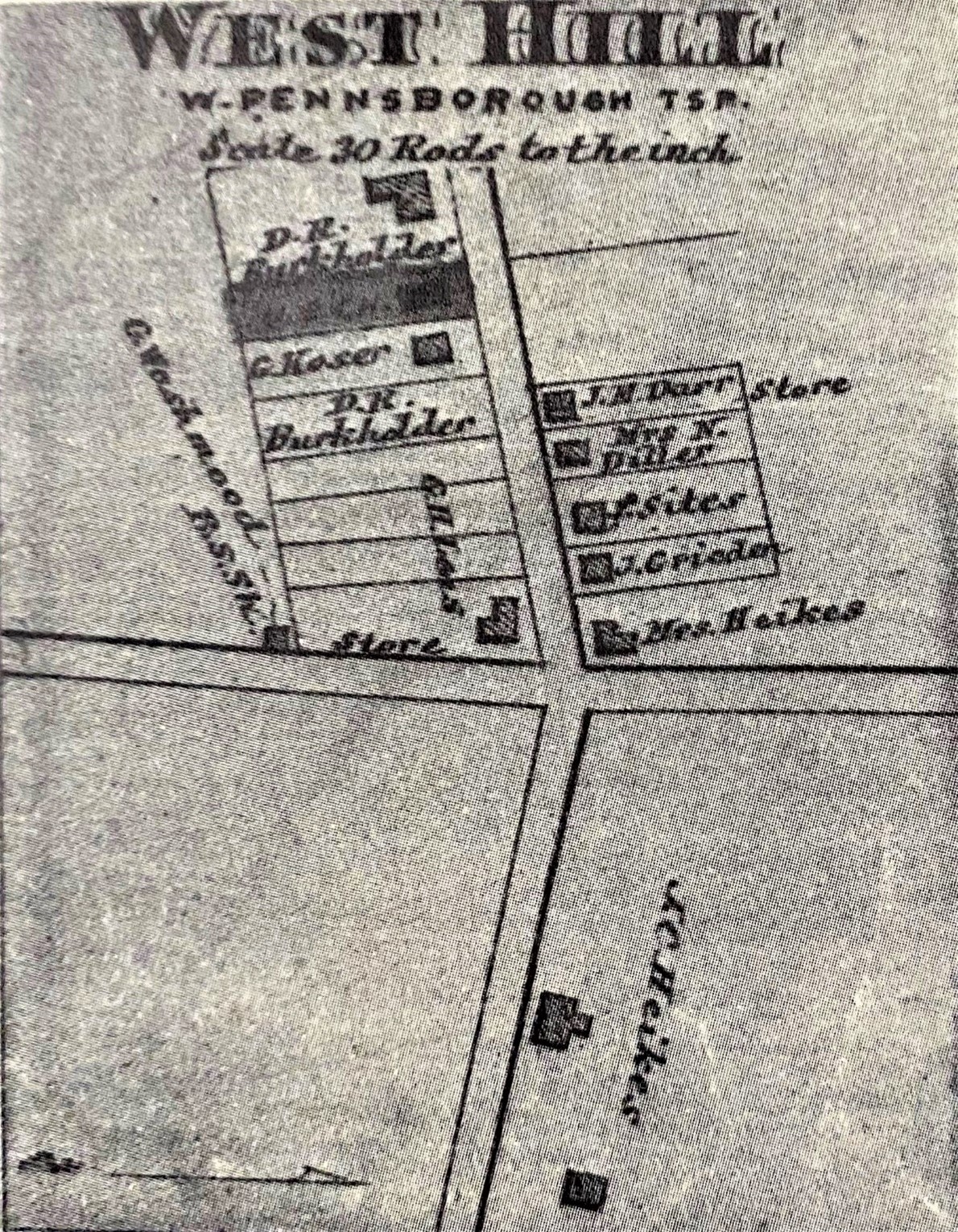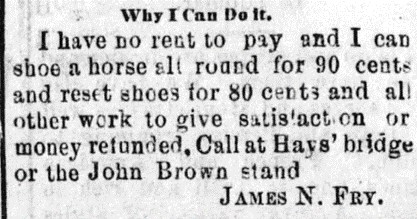The village of West Hill is located one mile west of Plainfield on Route 641 in West Pennsboro Township. The 1872 Atlas of Cumberland County shows the village consisting of six houses, a Methodist Episcopal Church, two stores, and a blacksmith shop.

The blacksmith shop is shown on G. Washmood’s land.
In December 1875, blacksmith James N. Fry of Plainfield married Amanda S. Sperow, also of Plainfield.1 In 1876, he either took over the existing blacksmith shop in West Hill, or he established a new one. The 1880 U. S. Census for the village of West Hill records 41 residents including the household of 26-year-old blacksmith James N. Fry, his wife Amanda, aged 30, children William E., aged 3, Minnie A., aged 1, 4-month-old Anna, and Fry’s Haverstick brother-in-law, a 40-year-old blacksmith. Fry’s business prospered, and in November 1885, the Carlisle Herald noted that Fry, blacksmith of West Pennsboro Township for the last nine years, “has built up a large trade.”
Shooting matches were popular, and one was held in West Hill on Christmas Day in 1888. The Carlisle Herald, reporting on holiday events around the county, wrote that of the fourteen turkeys shot for at West Hill, seven were won by James Fry, “…one of the best shots in that part of the county.”2 Not only was Fry a good shot, but a good blacksmith, too. According to his advertisement, he could shoe a horse for only 90 cents, and give satisfaction for his work or he would refund his customer’s money.

The Sentinel, Carlisle, April 2, 1889
By 1889 Fry and his family had moved to North Middleton Township where for the next ten years he operated his blacksmith shop at Hays bridge, three miles north west of Carlisle. He put the property up for sale in the Fall of 1899. It included his house, a stable, a blacksmith shop, a wagonmaker shop, a chicken house, hog pens and other outbuildings. Claiming there was no better blacksmith stand in the county, he sold his property to W. H. Cooper in October 1899.3 Fry sent his horse, wagon, buggy, sleigh, two sets of blacksmith tools, two tons of old iron and household furniture to auction in March 1900,4 and moved back to Plainfield.5 He had only eight months to live.
The 1900 Census for Lower West Pennsboro Township, taken June 20, 1900, records the household of James N. Fry consisting of James, aged 46, born in Pennsylvania in October 1853, his wife Amanda S., aged 54, born in Pennsylvania in February 1846, and two sons, Clinton H., aged 11, and Elmer P., aged nine. In 1900, only six of their eight children were still living.
Five months after the census was taken, Fry was dead. On the afternoon of November 24, 1900, Fry visited the residence of John Heinlein in Plainfield. At about 12:40 in the afternoon he was found dead on Heinlein’s paled fence by a passerby. Fry’s “neck was caught between two palings of the fence and with one hand he had a firm hold of the top of another paling.”6 The newspaper noted that it would never be known if Fry had a heart attack or whether he fell against the fence and was strangled. His obituary in the November 24, 1900, edition of the Carlisle Evening Herald reported that “The deceased formerly resided at West Hill, where he carried on blacksmithing for many years. Later he removed to Hays’ bridge, and last Spring he removed to Plainfield. Mr. Fry was a very industrious man and was widely known.”
Fry’s wife Amanda died in 1911 and is buried in the cemetery at St. Matthew’s Evangelical Lutheran Church in Plainfield. James is probably buried there also, but no stone has been found.


